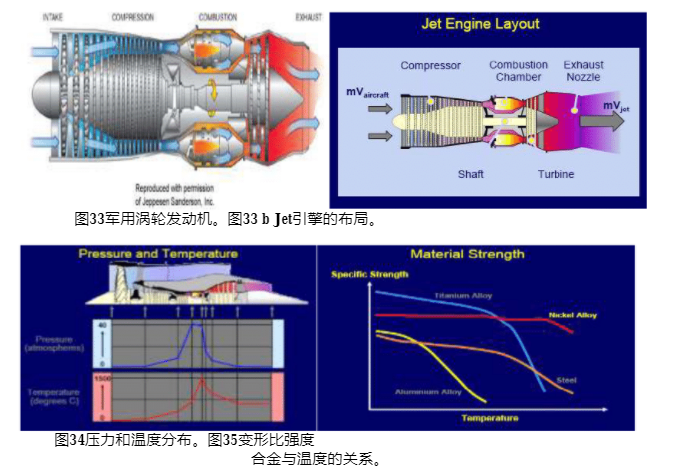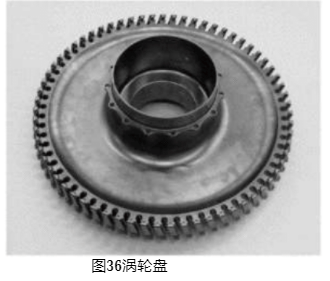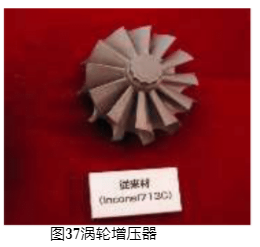In Aerospace
One of the most prevailing components in the aerospace equipment that used investment casting process to produce superalloy castings is used in Jet engines. Fig. 33 (a) and (b) shows the layout of the Jet engine, which consists of compressor, shaft, combustion chamber, turbine and exhaust nozzle. The distribution of pressure and temperature inside the Jet engine is shown in Fig. 34. The temperature level reaches the maximum in the combustion chamber.
Due to the distribution of temperature and pressure in Jet engine; Fig. 29 shows the alloys and the location of these alloys in the jet engine. It is noticed that Ni base superalloys are positioned just behind the combustion chamber in
Rolls Royce jet engine [89].
As seen in Fig. 35, temperature and the strength of different alloys have an inverse relationship. In the previous figure, Ti alloys have the highest strength among other alloys at lower temperatures. However, as the temperature increases the strength of Ti alloys decreases dramatically, while Ni alloys show the best strength at higher temperatures in comparison with other alloys. In Table 5 there are some Ni base superalloys, used as Jet engine parts like blades and wheels also as rocket parts.

Turbine Discs
The blades are fixed to a disc which is connected to the turbine shaft. The working temperature is much lower as the temperature of the blades. The blades must have a very good fatigue resistance. As material can be used polycrystalline materials because the turbine discs do not have to have a resistance against creep deformation. Discs normally are produced by casting and then forged into shape. But casted discs contain some segregation which decrease the fatigue resistance. To improve fatigue resistance the recent discs are made with powder metallurgical processes, displayed in Figure 36.

Investment Casting process is applied to produce special Nickel-based superalloy castings that are used in load-bearing structures to the highest homologous temperature of any common alloy system (Tm = 0.9, or 90% of their melting point).
Among the most demanding applications for a structural material are those in the hot sections of turbine engines. The preeminence of superalloys is reflected in the fact that they currently comprise
over 50% of the weight of advanced aircraft engines. The widespread use of superalloys in turbine engines coupled with the fact that the thermodynamic efficiency of turbine engines is increased with increasing turbine inlet temperatures has, in part, provided the motivation for increasing the maximum-use temperature of super
alloys [90].
The turbocharger, shown in Fig. 37tional air into the engine. Consequently a larger quantity of fuel, which is burned, can be used. The device contains a turbine which works with exhaust gases from the engine. Up to 150000 rotations per minute are possible.
Because of the exhaust gases the temperatures are very high and the conditions for oxidation are excellent. Therefore the material for
turbochargers must have a high fatigue resistance as well as a superb resistance against oxidation.


